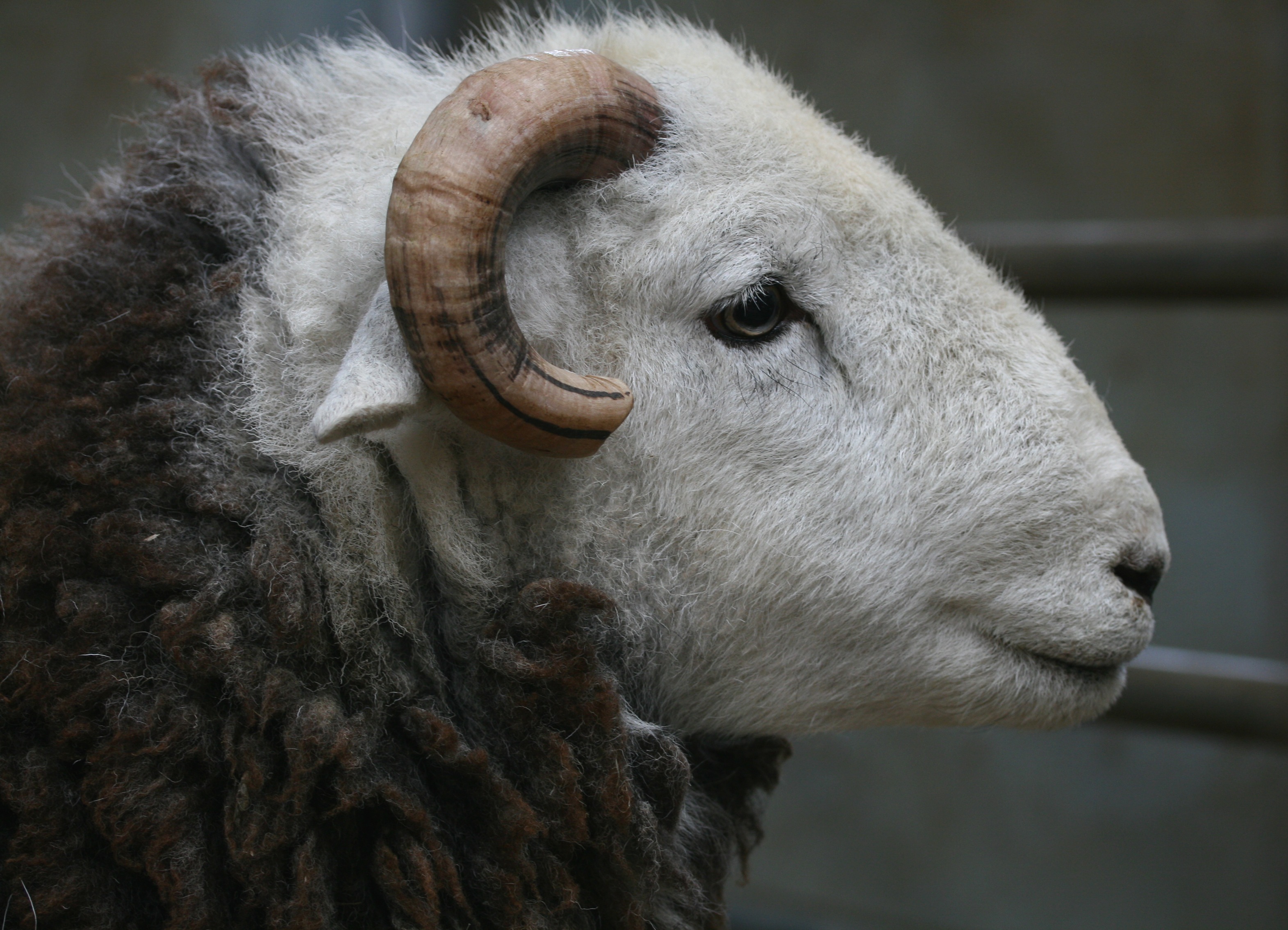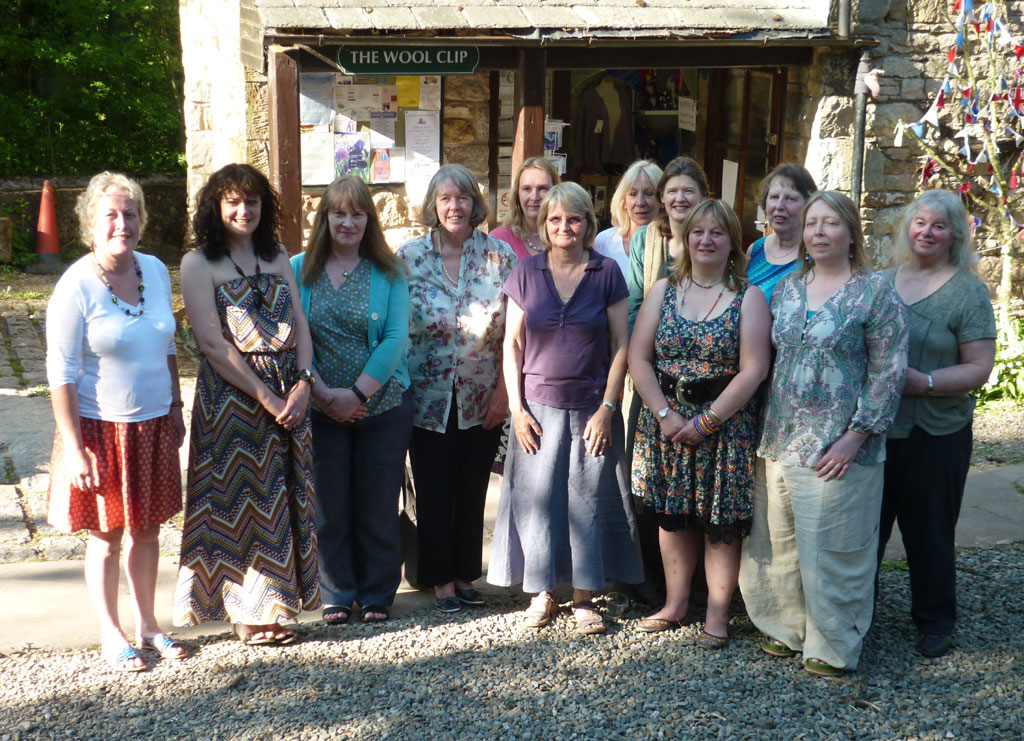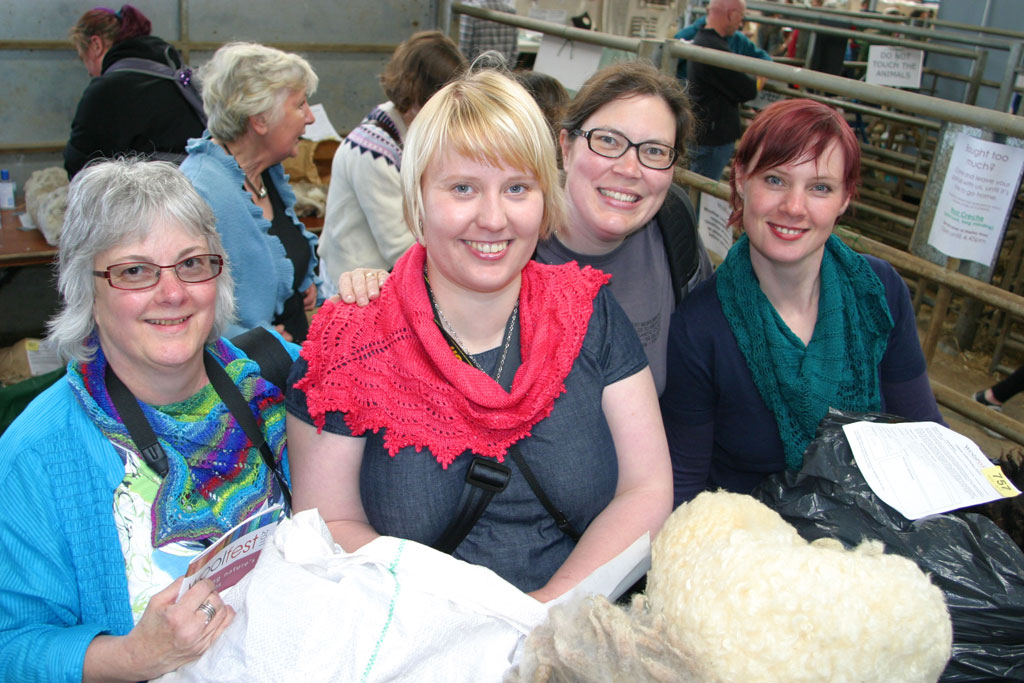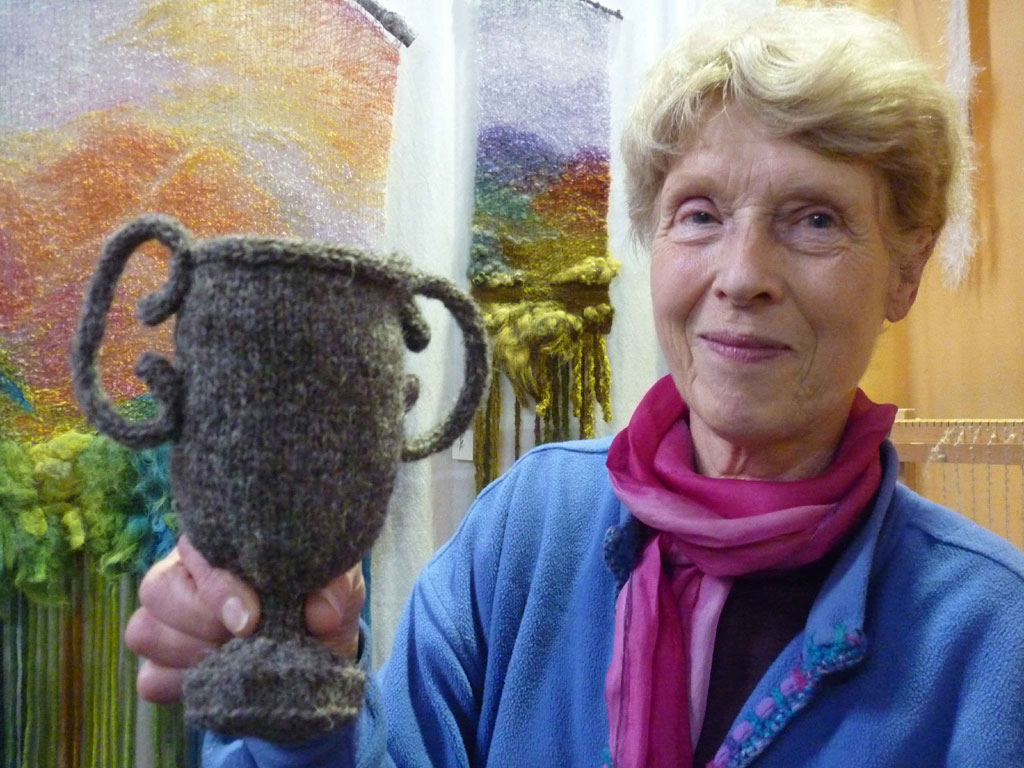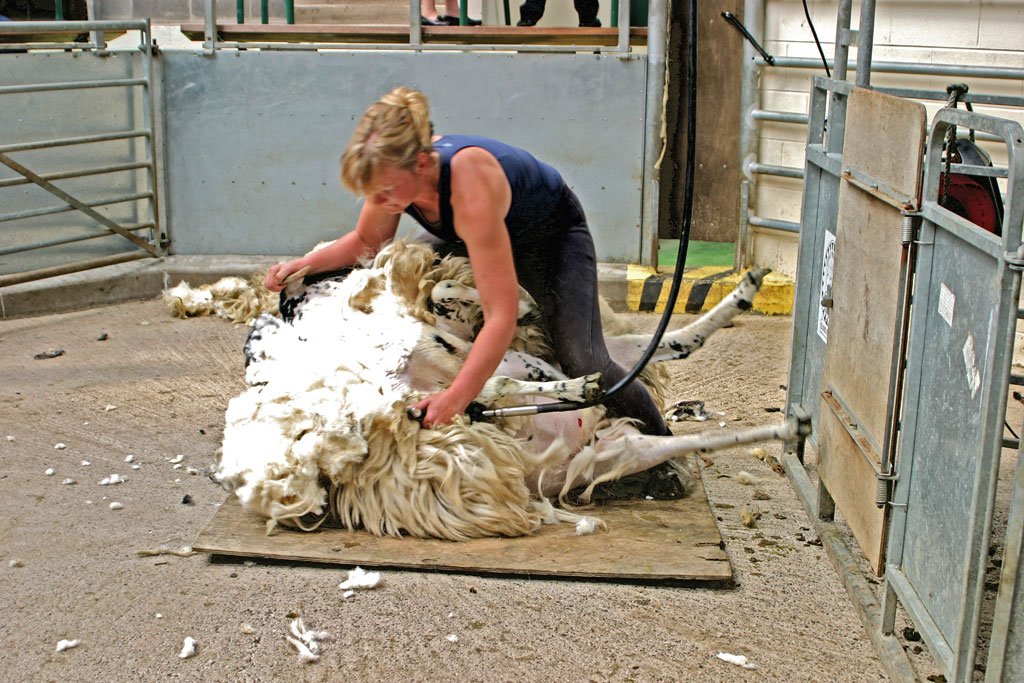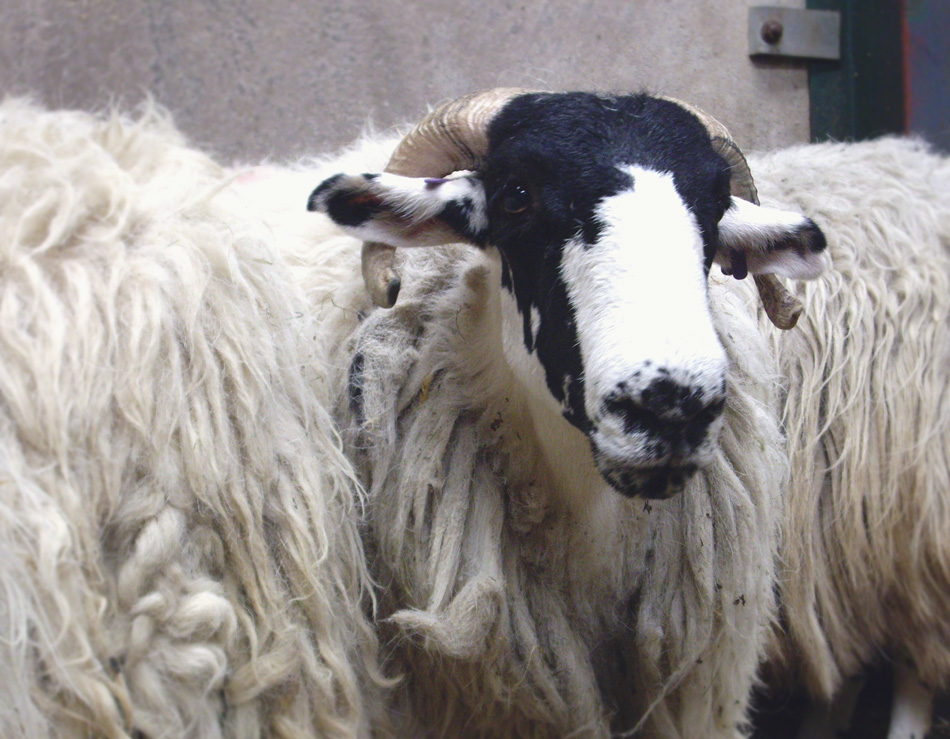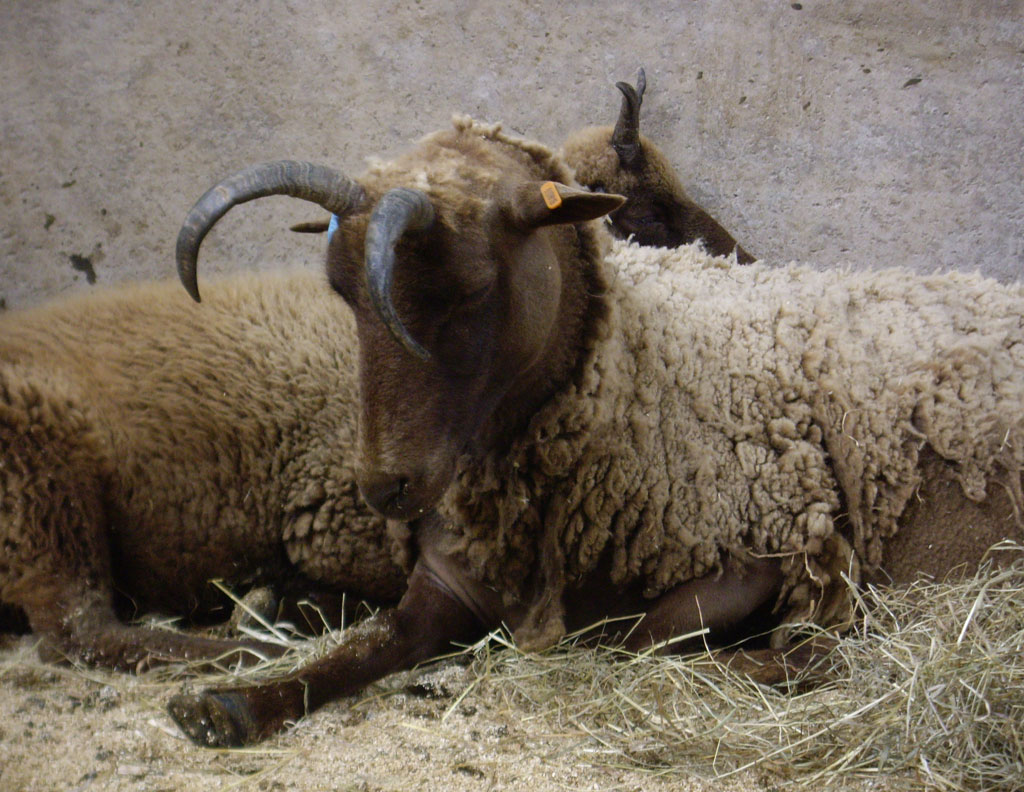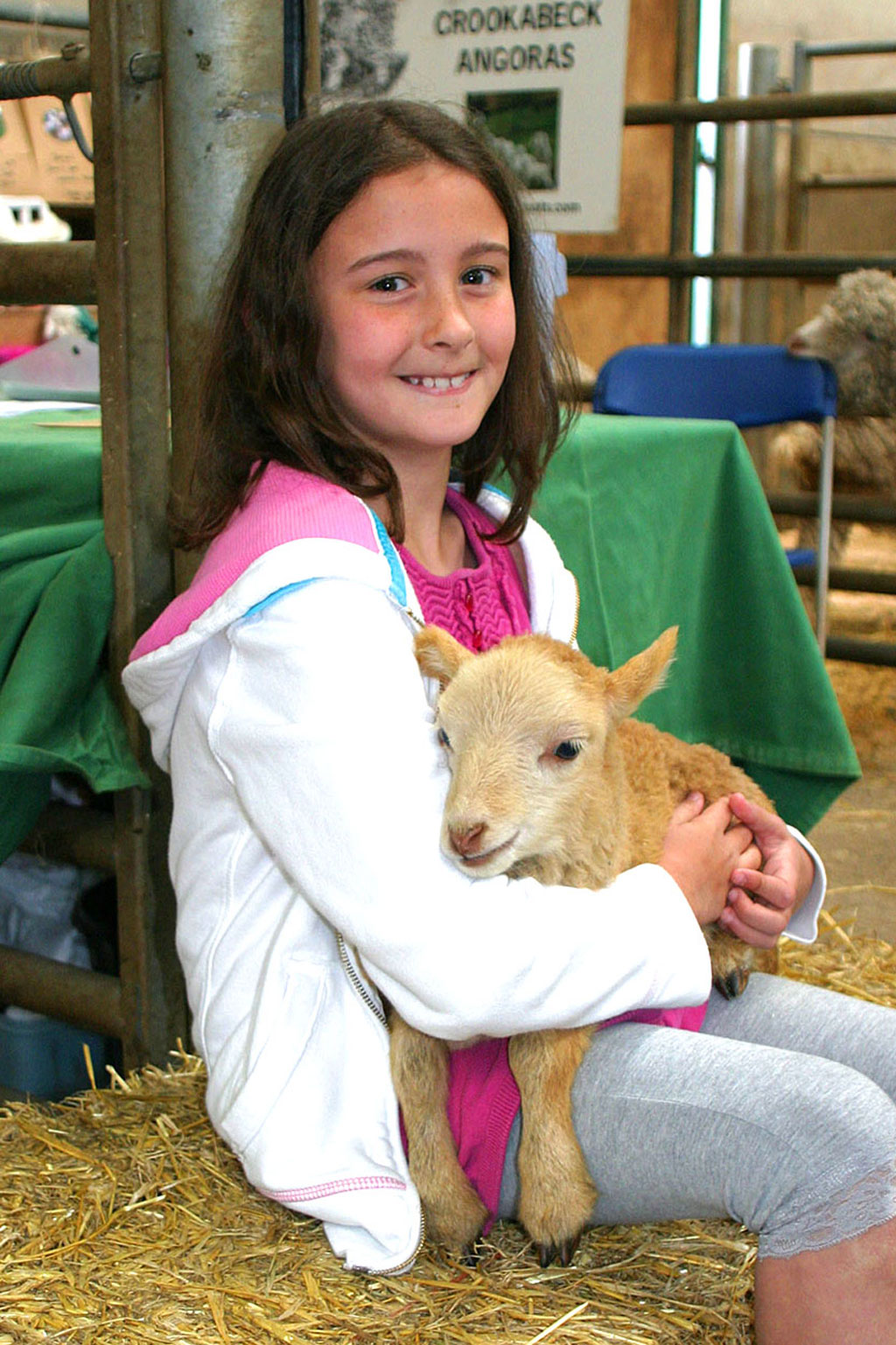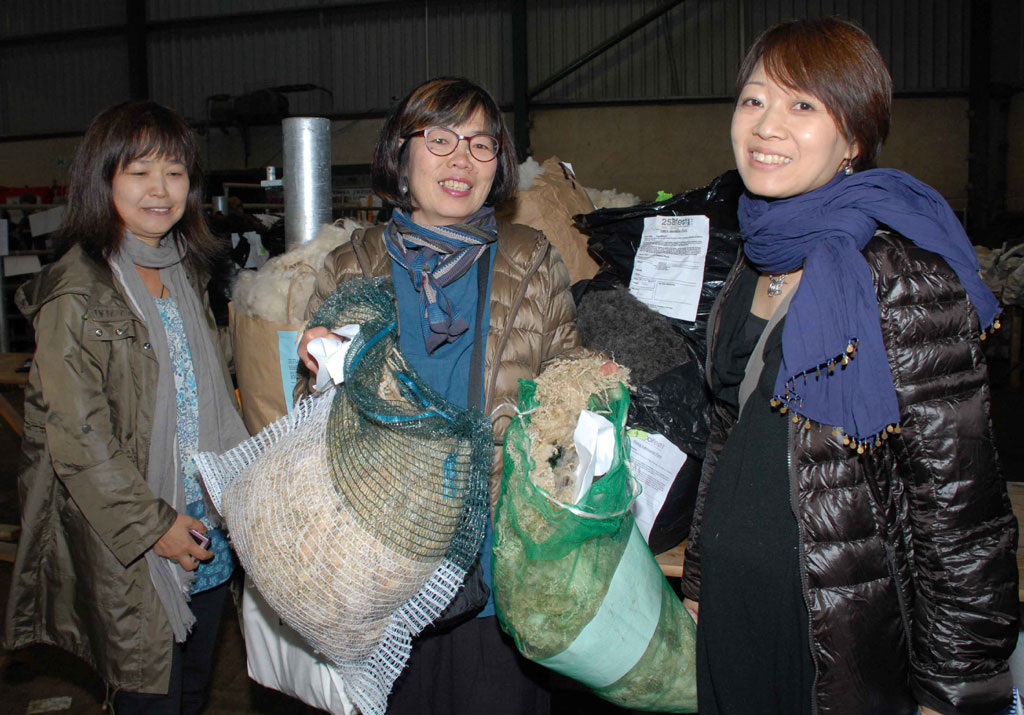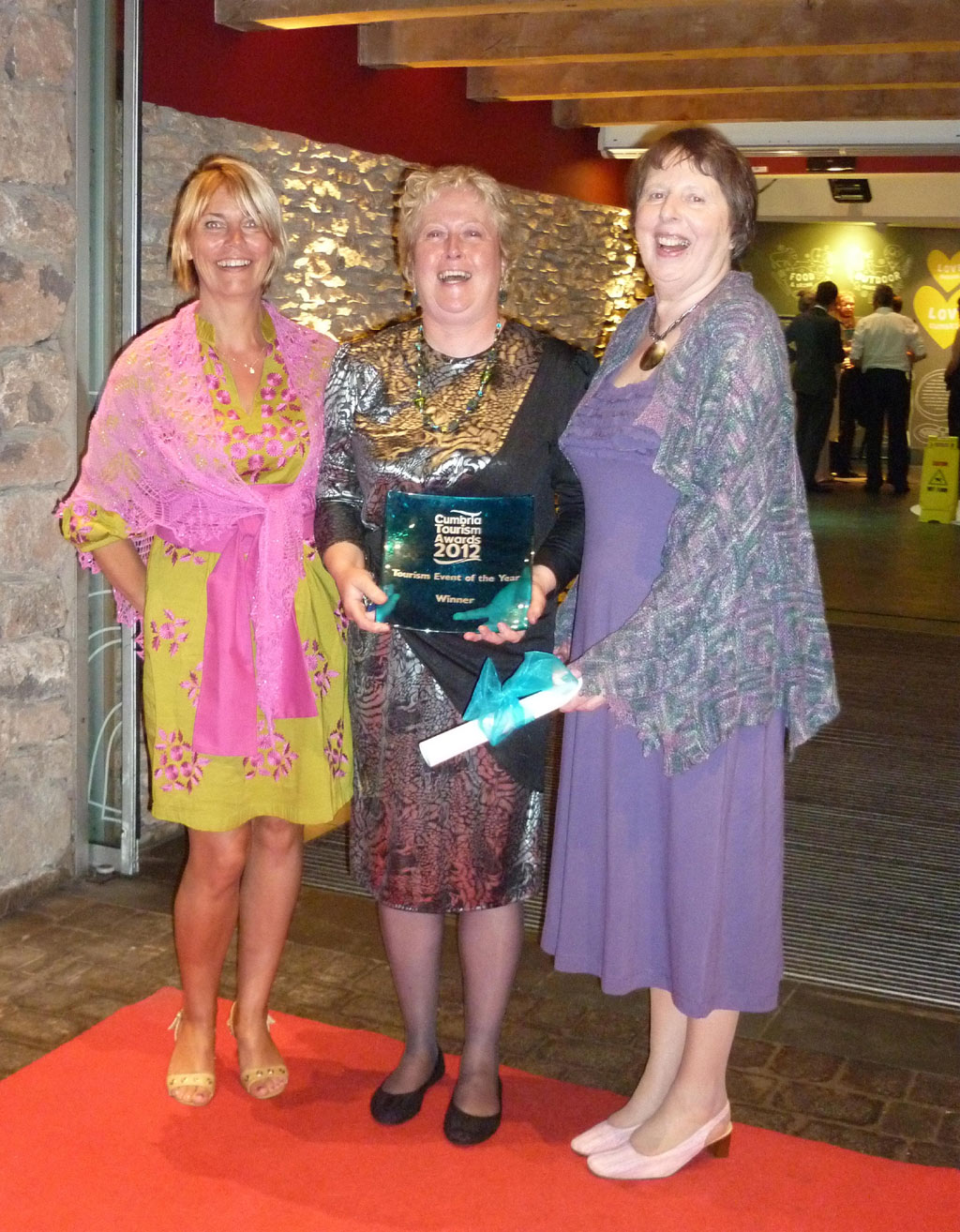Keen-eyed WOVEMBER readers will have noticed the prominence of WOOLFEST amongst our writings on WOOL, and the many times we have referred to this wonderful annual fibre festival in discussing how gaps between producers and consumers of WOOL might be closed. WOOLFEST started in 2005 and now attracts over 100 stallholders and 4000 visitors every year, and for TEAM WOVEMBER, was one of the first contemporary events where shepherds and high-quality yarn-purveyors might be encountered together in a single place. Bringing together shearing demonstrations, breed societies, and wool sellers whose products are made from traceable, often breed-specific wool, WOOLFEST is truly a place where even the casual visitor can glean important insights about WHAT WOOL IS, and WHERE WOOL COMES FROM!
‘Herdwick Ram’ photographed at WOOLFEST, photo © Kate Davies
Here to expand on what WOOLFEST is and to explain some of what lies behind it, is Marion Woolcott, one of the founding members of The Wool Clip.
The Wool Clip – photo © Sally Seed
The Wool Clip started over a decade ago as a co-operative of Cumbria-based crafters and makers. Most members were actively farming and raising families as well as undertaking creative and design work involving wool. A desire to preserve traditional craft skills and to keep British wool and local sheep farming going inspired these women to establish a co-operative together and create a shop which they could jointly run and stock with their creations. The commission on sold goods pays for the upkeep of the shop, and the co-operative is now 15-strong and won ‘Northwest Women in Business Social Enterprise of the Year Award’ in 2009. The Wool Clip members also organise WOOLFEST each year… which is what Marion will now tell us about in a Q&A illustrated with photos kindly supplied by Sally Seed.
1. First of all – for folks who haven’t been to WOOLFEST – what is it?
Woolfest is a fantastic show bringing together everything in the world of wool, from the animals, their fleece, the tools needed to turn this amazing fibre into beautiful clothes, and art pieces made using wool.
Happy Woolfesters with fleece, wool and hand knitted projects at WOOLFEST, photo © Sally Seed
Eta Ingham-Lawrie of Window of Woolly Wonders won the Herdwick Cup for her contribution to this year’s Woolfest and was presented with a knitted trophy by Marion Woolcott and Jean Wildish of The Wool Clip, photo © Sally Seed
Shearing demo at WOOLFEST, photo © Sally Seed
2. When and why was WOOLFEST set up and where did the idea come from?
In January 2004 at our annual lunch, Carolyn Rawlinson – a founder member of the Wool Clip – persuaded the rest of us that we should organise a show similar to the Maryland Sheep show in the US. This was a huge undertaking and without Carolyn’s enthusiasm it probably wouldn’t have happened. The Wool Clip was set up to promote Cumbrian Hill Sheep wool and Woolfest has just expanded this to a whole new dimension!
3. For me, WOOLFEST was really one of the first events I attended where there were real connections between livestock and WOOL. How important is it to the organisers of WOOLFEST that this is an event which closes the gaps between people who grow wool, and people who want to work with wool?
‘Rough Fell’ seen at WOOLFEST 2009, photograph © Felicity Ford
‘Manx Loaghtan’ seen at WOOLFEST 2009, photograph © Felicity Ford
It is amazing how many people go into a ‘wool’ shop and buy acrylic yarn unaware that it hasn’t come from a sheep. Visitors seeing the different breeds of sheep and the very varied types of fleece are beginning to appreciate what a valuable resource we have on our doorstep.
Meeting a lamb at WOOLFEST! Photo © Sally Seed
4. Have you noticed any changes in public reception to WOOLFEST since you first started out with this annual fibre festival?
The first Woolfest was in 2005 and it was the first show in the UK devoted entirely to Wool and natural fibres. We were thrilled with the large number of visitors that came in 2005 and each year we are seeing more and more including many from overseas, all just excited to spend time with like-minded people surrounded by an amazing array of fibres and colour. This year we even had a group of ladies who’d travelled from Japan to visit the show to buy fleeces to send back home.
Japanese women in search of British Wool, Photo © Sally Seed
5. Could you say a little bit about the WOOLCLIP? Who you are and how you came to work together?
In 1999 a group of women got together with the Rural Women’s Network and with the aid of a millenium grant we explored what happens to our wool once it leaves Cumbria. It was at a time when wool prices were rock bottom and farmers were burning their fleece rather than incur the costs involved in transporting that wool to the Wool Marketing Board, or storing it. In 2001 we were awarded a grant from The Carnegie Trust and then another one from DEFRA – using this money we formed a co-operative business and opened a very small retail outlet at Priests Mill in Caldbeck to sell our wool and woollen crafts. The business has grown each year and we have expanded our premises at Priests Mill three times. Today there are 6 of the original group and at present we have 15 members, all involved in working with wool – from raw fibres to finished goods – with an emphasis on local produce with a wide appeal.
6. How do the interests and passions of the Wool Clip shape the way WOOLFEST is curated and run?
Without Carolyn’s passion, Woolfest would not have happened. We still run it to her same high standards. We are now in the position that we have far more applications from stallholders than we have room for, enabling us to pick the very best and also bring in new businesses; but this also means that we have to turn many away. Each year we take notice of visitor and stall holder feedback to improve the show; none of us started out as show organisers and we are learning all the time. Our main aim is to bring a show that we would like to visit ourselves.
7. How has WOOLFEST changed since its early days?
Well it is much bigger. The Venue at Mitchells Livestock centre has expanded and we have filled it! It is also taken very seriously by businesses around Cockermouth who back in 2005 thought these Wool Clip ladies were crazy and no one would travel to a show devoted to Wool!
8. Just for fun – what is your favourite memory from WOOLFEST 2012?
My favourite memory of Woolfest 2012 wasn’t actually at the show but a few weeks before when I heard the theme tune from Shaun the Sheep start playing as they announced that Woolfest had won the Cumbrian Tourism Award for the Event of the year 2012 – what an accolade for Woolfest.
The Wool Clip winning the Cumbrian Tourism Award for the Event of the year for 2012, photo © Sally Seed
Many thanks to Marion Woolcott and The Wool Clip for organising WOOLFEST and for supplying WOVEMBER with all these wonderful words and pictures! All photos unless otherwise stated © Sally Seed and used with her kind permission, all words unless otherwise stated © Marion Woolcott on behalf of The Wool Clip and used with kind permission
